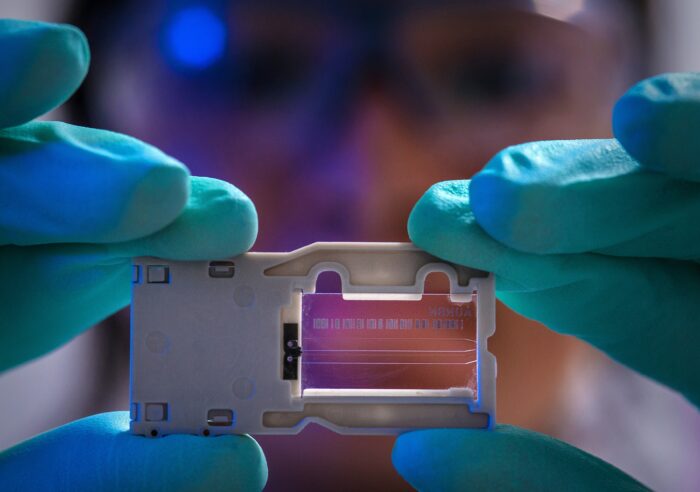
At the end of February, Proof News announced itself to the world with a letter from its creator.
“Hello world!” wrote Julia Angwin, the founder of Proof and former editor-in-chief of The Markup. “Welcome to Proof News. Proof is meant to be an answer to the existential question that journalists are struggling with right now: What is our purpose?”It’s a lofty goal, to say the least. In her letter, Angwin wrote that while social media has turned many of us into witnesses and storytellers, the most important role journalists can play today is that of the analyst:
“Awash in information, people need help making sense of all this witnessing and storytelling. Are the stories on their news feeds actually representative of what is happening in the world? Are they outliers being blown out of proportion? Analysis is particularly important in today’s world where power is so often cloaked in opaque and complex systems that require hard work to unravel.”
Angwin sees that unraveling as Proof’s job, and she’s looking to science, rather than journalistic traditions, to inform the publication’s work. She wants Proof’s work to be inspired by the scientific method rather than ideas of objectivity: reporters will develop hypotheses and test them through the reporting process, building software and data sets that will be released to the public for review. Much like a published scientific paper, each story will also be accompanied by an “ingredients label” that lays out its hypothesis, sample size, reporting techniques, key findings, and limitations.
Developing a hypothesis is another term for asking questions, which is essential to all journalism, and in her letter Angwin admits that looking to science is not a new idea; Walter Lippmann, the namesake of the building that houses the Nieman Foundation, called for a scientific approach rather than chasing scoops back in 1922, and Angwin herself wrote about the idea last year.Unlike scientists, Proof’s journalists will not be subjected to the processes like IRBs or peer reviews that have become hallmarks of modern-day scientific publishing. “It’s not realistic for journalism to [be subjected to those processes] because we are still trying to be faster than science can usually move,” Angwin said. “I see the scientific method is more of a philosophical approach, something I’m aiming toward but not aiming to achieve.”
This approach is similar to that of The Markup, which Angwin co-founded, was ousted from, and then returned to as editor-in-chief. She later stepped back to become editor-at-large before leaving entirely last year. Angwin is both the editor-in-chief and CEO of Proof, a move that she says will allow her more control over the publication’s direction than she had as an editor-in-chief reporting to someone above her, and Proof’s reporting will expand beyond The Markup’s technology focus to include topics like climate change and corporate accountability. And unlike the Markup and its team of almost 30 people, Proof is starting small, with a staff of just six. There are, aside from Angwin and her COO, two reporters, an executive producer, and data editor Rina Palta, who left The Markup to join Angwin.
Proof is a nonprofit that is fiscally sponsored by Aspiration, a 501(c)(3) that has also collaborated with OpenNews (which, coincidentally, employed Angwin’s successor at The Markup, Sisi Wei). It’s received funding from a number of donors, including the Internet Society Foundation and the Alfred P. Sloan Foundation, and Angwin hopes that being a nonprofit will insulate Proof from the whims of the ad market or subscribers. But 2024 is a tough year to launch any new media venture, regardless of funding model, and she wants to experiment with various options for reaching audiences. Proof has a newsletter, of course, but Angwin is especially interested in building out a video strategy, both with original videos and by providing Proof’s reporting and data to established creators to turn into videos of their own.
“I think we in journalism have a lot to learn from online creators on TikTok and Youtube,” Angwin said. “We [journalists] have not built a lot of trust from our audiences, and serious journalism is not taking platforms like TikTok and YouTube seriously. So I really want to enter that platform as a serious journalist and present more trustworthy information.”
Many news organizations have, of course, built out video offerings — who can forget the pivot to video? — and outlets like The Washington Post and NPR’s Planet Money seem to have cracked the recipe for a blend of humor and news that works especially well for TikTok. Angwin’s approach is somewhat different in that while she would like to build out a presence for Proof, the focus is more on simply getting Proof’s reporting into the world regardless of who is making the videos. “I just want to bring trustworthy information into this ecosystem,” she told me. “And that gives me a lot more flexibility.”
If all of this — the open data, the emphasis on disseminating information, the scientific approach — sounds a bit like a think tank, well, Angwin has heard that before too. “People are always accusing me of being a think tank,” she said. “The real difference here is whether you’re willing to be adversarial. What we’re trying to do is hold power to account, which means you need lawyers and liability insurance and you have to be willing to ask hard questions of very powerful people who have the ability to sue you out of existence. And that’s really the difference.”